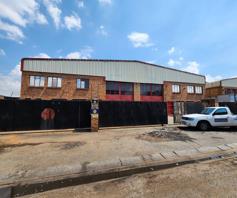Pricing realism and oversupply are now stark realities in the residential property market with more people dropping their asking prices and properties staying on the market for longer periods.

The 2nd Quarter FNB Property Barometer, which gauges the opinions of estate agents, showed the average time that a house is on the market before being sold shot up to 17 weeks and 1 day from 12 weeks and 4 days in the 1st Quarter (Q1).
“While being subjective, we are of the opinion that in a market with a healthy balance between demand and supply, this level should be below 2 months,” said John Loos, property economist at FNB.
“The latest average suggests a tendency towards oversupply of property relative to demand, and the necessity for some possible price ‘correction’.”
The estimated percentage of sellers being required to drop their asking price in order to sell jumped 5% from an already high 76% in Q1 to a whopping 81% Q2.
“Admittedly, moves from quarter to quarter can be volatile, but the bottomline is that these levels are far removed from those closer to 30% and 40% seen during the boom years,” Loos said.
He said the implications of this could be that prices could begin to come under pressure, “and indeed in June we have seen a slowing in the pace of acceleration in house price growth”.
Demand was still up 24,4% year-on-year (y/y) in Q2, but this was a growth deceleration from the 32,3% in the previous quarter. This growth was 36,8% in third quarter (Q3) 2009.
Examining the reasons for buying property, agents taking part in the survey continue to point to primary residential demand as being all-important, with non-essential demand languishing. The latter – which includes holiday properties, properties bought for family and buy-to-let – has seen a decline as part of overall residential buying due to widespread financial pressure remaining in the household sector. “Residential property is also still struggling to regain its popularity as an asset class and this will not change in the near future.”
Loos says although the World Cup will bring many potential long-term benefits for the residential property sector, the near-term outlook remains bleak.
The survey has begun to point towards a residential property market weakening, after a mild recovery that lasted from early-2009 to early-2010. “This is due to a slowing economy and a lack of further interest rate stimulus following the 5 percentage points’ worth of rate cutting from December 2008 to August 2009.”
Agents surveyed also said the near-term prospects for the residential property market look quite bleak, with demand being down and their opinions divided on whether the World Cup boosted or stymied demand for residential property.
The survey asked the agents to rate demand activity on a scale of 1 to 10. This figure slipped from 6,35 in Q1 2010, the highest it has been since early-2007, to 5,96 in Q2 2010.
“The single most important factor cited by agents as a driver of near-term expectations in the survey was the World Cup, with some believing it was a positive factor because it was improving sentiment in the country. Others, however, believed that many people were so caught up in ‘World Cup fever’ that they weren’t buying homes.”
Loos says the risk of a double-dip recession in 2011 remains high, given the vulnerability of some highly-indebted developed economies as well as a high level of indebtedness in SA’s household sector. “This implies that, at best, we will see house price inflation continuing in the coming years, but receding back into single-digit territory by 2011.”
“For the South African Reserve Bank (SARB), setting interest rate policy could be challenging in future. While it is tempting to wish for more interest rate cutting to alleviate pain in tough economic times, we will need to consider the implications at a later stage when they will rise again.”
“At present, the SARB has a nicely balanced interest rate stance from a property point of view, having given significant relief to those with debt, but not spurring robust new household sector borrowing growth,” Loos said.
Moreover, the report cited “downscaling due to financial pressure” – 20% of total selling – as the primary reason why people put their houses on the market. Downscaling with life stage comprised 16% of total sales, upgrading a firm 15% and emigration a mere 7%. – Eugene Brink
Readers' Comments Have a comment about this article? Email us now.








